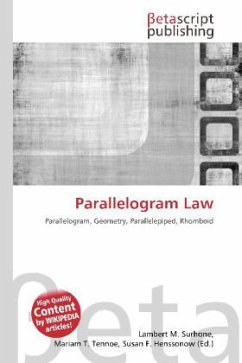Please note that the content of this book primarily consists of articles available from Wikipedia or other free sources online. In mathematics, the simplest form of the parallelogram law belongs to elementary geometry. It states that the sum of the squares of the lengths of the four sides of a parallelogram equals the sum of the squares of the lengths of the two diagonals. In case the parallelogram is a rectangle, the two diagonals are of equal lengths and the statement reduces to the Pythagorean theorem. But in general, the square of the length of neither diagonal is the sum of the squares of the lengths of two sides. Most real and complex normed vector spaces do not have inner products, but all normed vector spaces have norms (by definition), and thus one can evaluate the expressions on both sides of "=" in the identity above. A remarkable fact is that if the identity above holds, then the norm must arise in the usual way from some inner product.
Bitte wählen Sie Ihr Anliegen aus.
Rechnungen
Retourenschein anfordern
Bestellstatus
Storno








